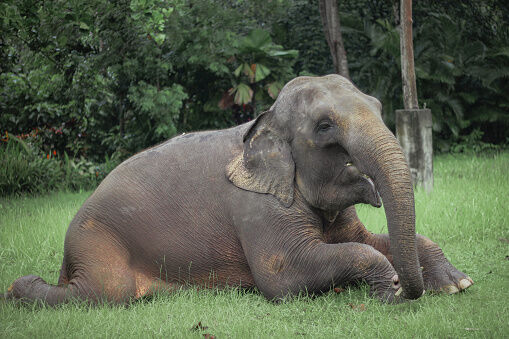Asian elephants’ habitat shrinkage over three centuries

Asian elephant habitats have experienced a significant decline of almost two-thirds since the 18th century, according to a recent study. The loss corresponds to approximately 3.3 million square kilometres, an area equivalent to the size of India. The study revealed that China had the most significant reduction in suitable elephant habitats in the region – losing 94% of its original habitat, followed closely by India at 86% and Bangladesh at 72%. Thailand, Vietnam, and Sumatra have also experienced a greater than 50% decline in suitable elephant habitats.
Researchers observed a global trend of landscapes being transformed into urban areas, agriculture, and industrial sites, causing the destruction of the elephants’ natural habitats. The international team, consisting of specialists from Australia, Britain, Cambodia, Indonesia, Malaysia, the United States, and Vietnam, published their findings in the peer-reviewed journal Scientific Reports.
Lead author Shermin de Silva, founder of the elephant conservation non-profit organisation Trunks & Leaves, explained that Asian elephants flourish in seasonal grasslands, tropical deciduous forests, and rainforests when food and water are easily accessible. However, human activities such as agriculture, industrial development, and urbanisation lead to the degradation of these habitats, driving elephants into human-inhabited areas and increasing the chances of conflict.
Towards the end of 2020, a group of 15 wild Asian elephants left their home range in Southwest China’s Mengyangzi Nature Reserve in Yunnan province to search for new habitats. Travelling around 500km, they entered the provincial capital of Kunming, leading to incidents of crop destruction and human evacuations. The study discovered that only 5.7% of Yunnan province’s existing rangeland was considered suitable for elephants, indicating a severe lack of appropriate habitat. De Silva suggested gradually increasing the amount of habitat available for elephant populations and reducing instances of human-elephant conflicts.
Listed as endangered since 1986, Asian elephants are found primarily in South Asia and Southeast Asia with approximately 44,000 remaining in the wild. Around 60% of the remaining elephants live in India, with Sri Lanka hosting nearly 6,000 elephants and Malaysia having almost 2,300. Within China, the species receives first-level protection, with about 300 wild elephants residing in Yunnan, the country’s most biodiverse province.
De Silva pointed out that the loss of elephant habitat in China could have been influenced by local demand for ivory; however, there is insufficient evidence to confirm the connection. Since late 2017, China has banned the domestic trade and processing of ivory. While both male and female African elephants possess tusks, only some male Asian elephants grow them. The situation highlights the urgent need to address both habitat loss and other factors contributing to the decline of endangered Asian elephant populations.
Latest Thailand News
Follow The Thaiger on Google News:


























